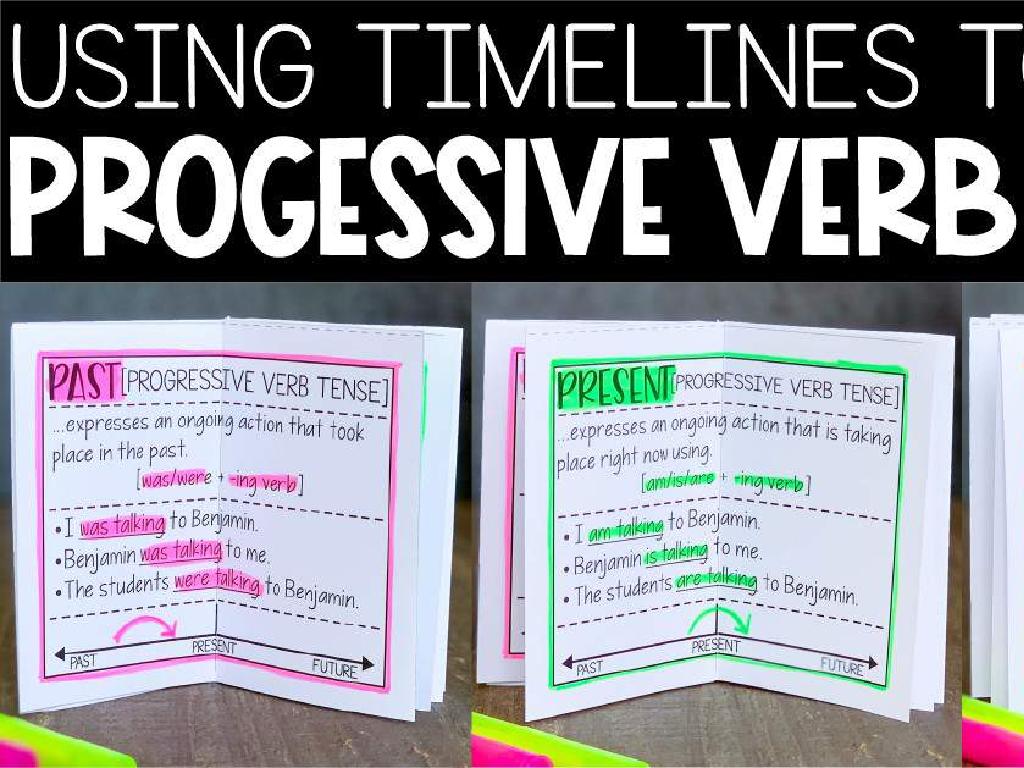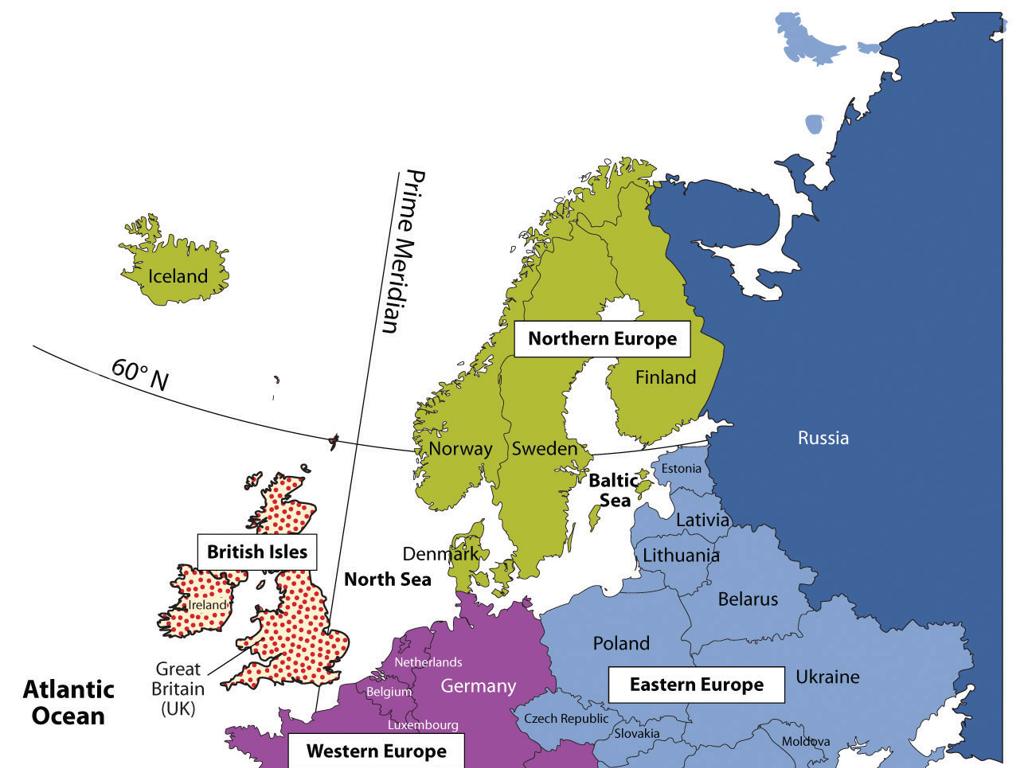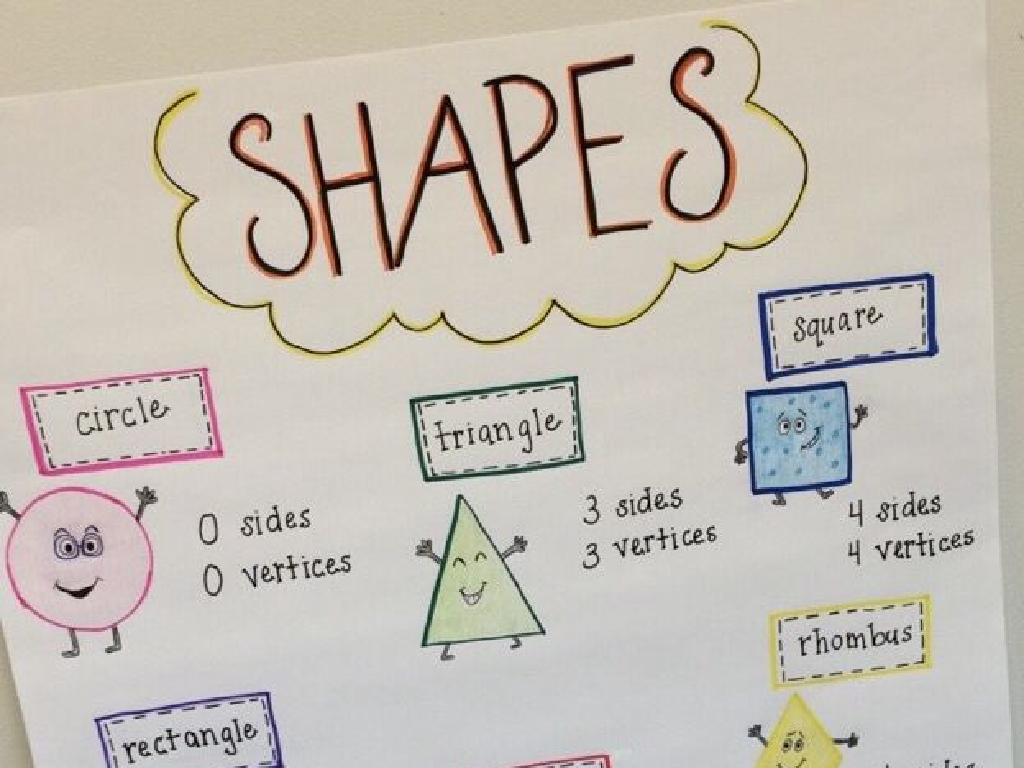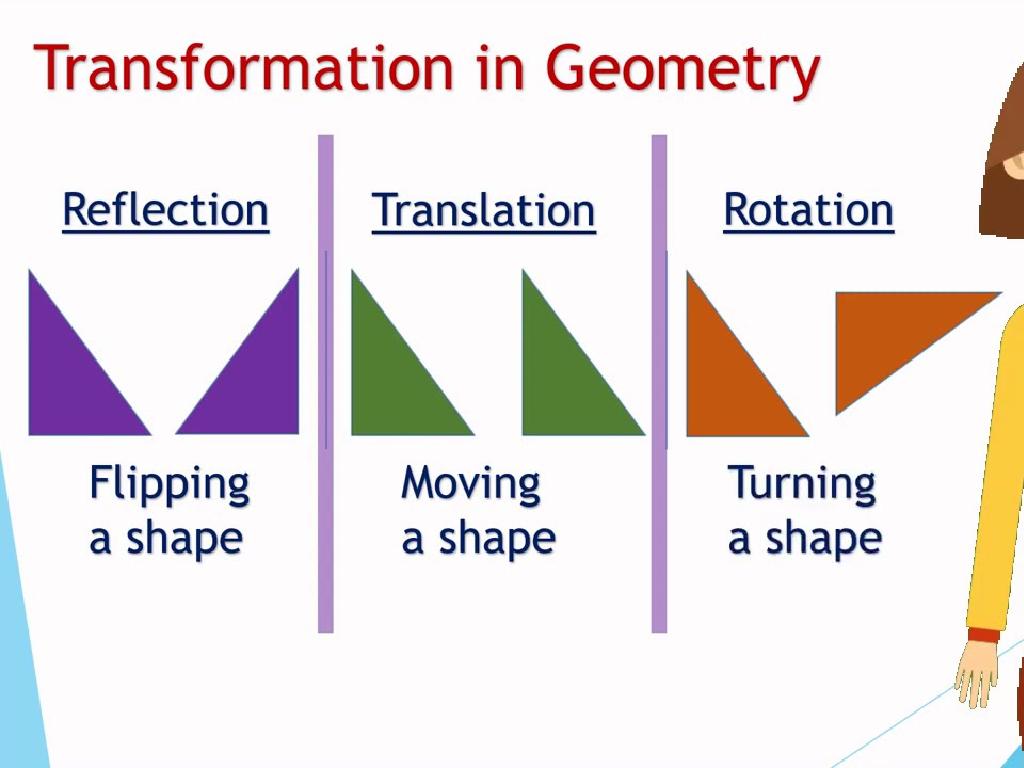Order Events In A Story
Subject: Language arts
Grade: Second grade
Topic: Sequence
Please LOG IN to download the presentation. Access is available to registered users only.
View More Content
Introduction to Story Sequencing
– What is sequence in stories?
– Sequence is the order in which events happen.
– Importance of event order
– Helps us follow the story and predict what comes next.
– Examples: Beginning, Middle, End
– Beginning: setting the scene, Middle: main events, End: conclusion.
– How sequence aids understanding
– Knowing the sequence helps us comprehend the story better.
|
This slide introduces the concept of sequencing in storytelling, which is crucial for second graders to understand the structure of a narrative. Explain that sequence refers to the order of events from start to finish. Emphasize why maintaining the correct order is important it helps readers follow the plot and anticipate what might happen next. Use simple stories familiar to the students to illustrate the beginning (introduction of characters and setting), middle (main events and problems), and end (resolution). Discuss how recognizing these parts helps us to better understand and enjoy the story. Encourage students to think of their favorite stories and identify the sequence of events in them.
Sequencing Events in a Story
– Learn ‘First’, ‘Next’, ‘Then’, ‘Last’
– These words start the action in a sequence.
– Signal words show event order
– They are like clues to put events in order.
– Practice with a simple story
– We’ll use these words to order events in a story we read together.
– Share our story sequences
|
This slide introduces the concept of sequencing events in a story using the signal words ‘First’, ‘Next’, ‘Then’, and ‘Last’. These words are crucial for understanding the order in which things happen in a narrative. Start by explaining each signal word and its role in indicating the sequence of events. Then, practice as a class by reading a simple story and identifying these signal words, discussing as a group the order of events. Finally, have the students individually or in pairs apply these words by sequencing events from the story or a new example. This activity will help reinforce their understanding of narrative structure and the importance of sequence in storytelling.
Sequencing with Pictures: Story Order
– Look at story pictures
– Decide the first/next/then/last picture
– Arrange pictures in sequence
– Helps understand the story’s timeline
– Tell the story from the pictures
– Use the sequence to narrate the story clearly
|
This slide is designed to help students understand the concept of sequencing in a story using visual aids. Present a series of pictures to the class and ask them to observe the details. Encourage them to determine the logical order of events by discussing which picture should come first, next, then, and last. Once the correct order is established, have the students arrange the pictures on a board or table. Finally, ask them to tell the story based on the sequence of pictures. This activity will enhance their comprehension skills and ability to identify the beginning, middle, and end of a story. For the activity, prepare four different sets of picture sequences so that students can work in small groups. Each group can have a different story to encourage a variety of narratives during the sharing session.
Reading Time: Identifying the Story Sequence
– Read a story as a class
– Discuss the story’s events
– Find ‘First’, ‘Next’, ‘Then’, ‘Last’
– Look for keywords that signal order in the story
– Understand the order of events
– Helps us see how the plot unfolds step by step
|
This slide is aimed at helping second-grade students understand the concept of sequencing in a story. Start by reading a short story together as a class to ensure all students are familiar with the content. After reading, open a discussion about the events that took place in the story. Guide the students to identify the beginning of the story with ‘First’, what happened next with ‘Next’, the following events with ‘Then’, and the conclusion with ‘Last’. Encourage them to use these keywords to describe the sequence of events. This activity will help students to comprehend the structure of a narrative and improve their ability to retell stories. For the activity, consider using familiar and simple stories to make it easier for the students to grasp the concept of sequencing.
Create Your Own Story Sequence
– Start with ‘First’ to set the scene
– Introduce characters and location
– Use ‘Next’ to introduce action
– What happens right after the beginning?
– ‘Then’ adds a twist or challenge
– How do the characters try to solve problems?
– End with ‘Last’ for the conclusion
– How does the story end? What’s the resolution?
|
This activity encourages students to understand and practice the concept of sequencing in storytelling. By creating a 4-part story, they will learn how to structure a narrative in a logical order. Encourage creativity and make sure they understand that each part of the story should connect to the next. The drawing component helps them visualize their story and makes the activity more engaging. During the next class, provide time for students to share their stories, which will help them practice their speaking skills and allow them to see different ways to sequence events.
Class Activity: Sequence Relay
– Break into small groups
– Receive a set of event cards
– Each group gets different parts of a story on cards
– Sequence the cards together
– Discuss with your group to decide the order of events
– Win the sequencing race!
– The first group to order their story correctly wins a prize!
|
This activity is designed to teach students about the concept of sequencing in a fun and interactive way. Divide the class into small groups, ensuring a mix of abilities in each group. Hand out a set of event cards to each group; these cards should have different events from a story they are familiar with. The task for each group is to work together to place the cards in the correct order that the events occurred in the story. Monitor the groups to ensure they are discussing and cooperating effectively. The first group to correctly sequence their story should be rewarded to encourage participation. After the activity, have a reflective session where each group explains the sequence of their story and the clues that helped them determine the order. This will reinforce their understanding of sequencing and narrative structure.
Sequencing Wrap-Up: Why It Matters
– Importance of story sequencing
– Sequencing helps us understand the order of events and the story better.
– Review sequence keywords
– ‘First’, ‘Next’, ‘Then’, ‘Last’ are clues to the story’s sequence.
– Recap today’s learning journey
– We read stories and ordered events today.
– Reflect on our favorite parts
– Think about the part of the story you liked most!
|
This slide aims to conclude the lesson by emphasizing the importance of sequencing in understanding stories. It’s crucial for students to recognize that sequencing helps us follow the plot and comprehend the progression of events. Review the key terms that signal sequence in a story and how they help us predict what comes next. Recap the activities done in class, such as reading stories and arranging events in the correct order. Encourage students to reflect on their favorite parts of the stories and how the sequence of events led to those moments. This reflection reinforces their understanding of the lesson’s objectives and the value of sequencing in storytelling.






